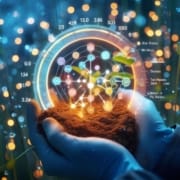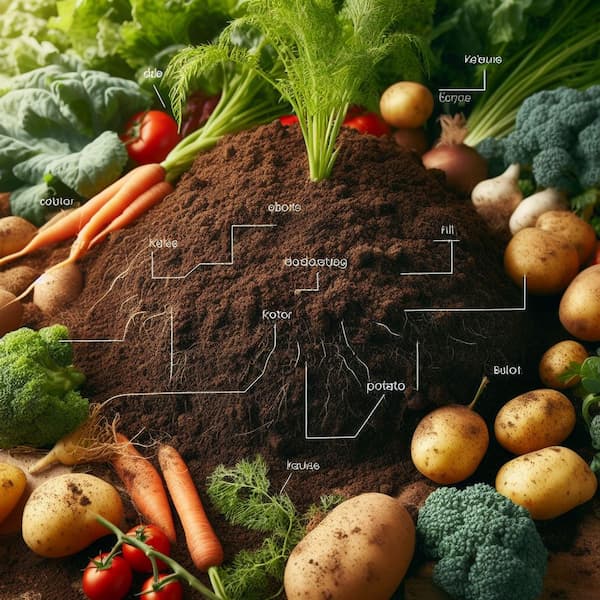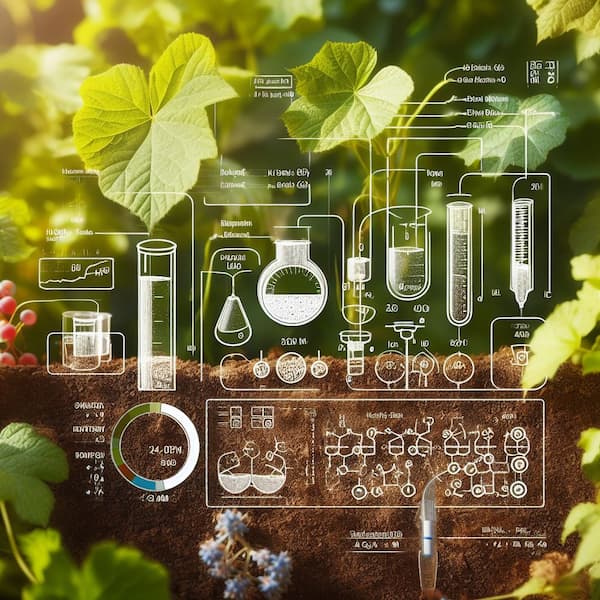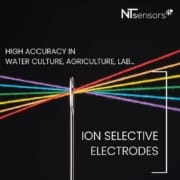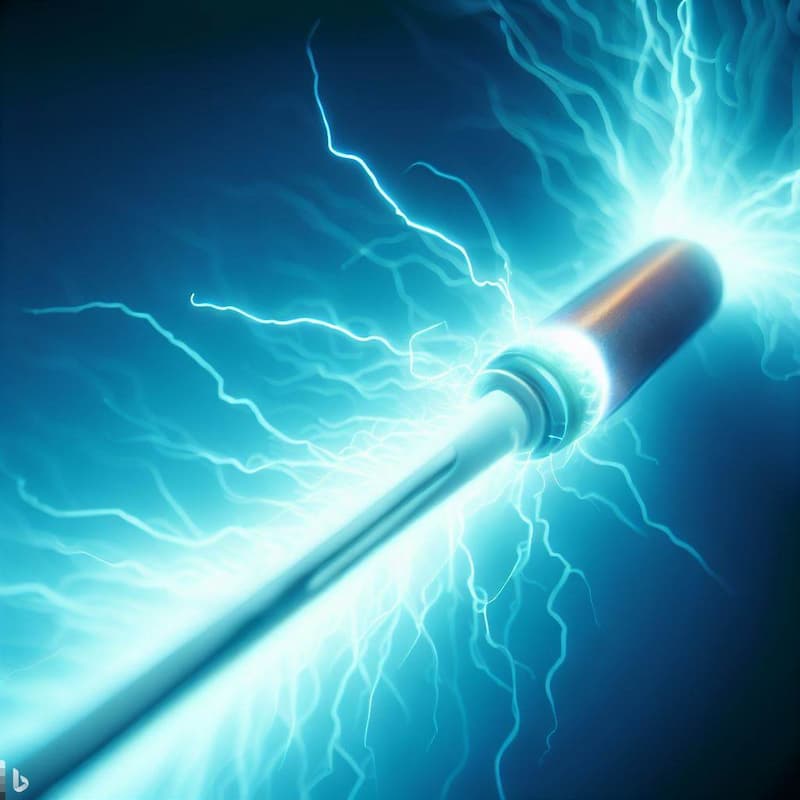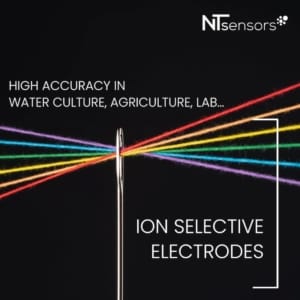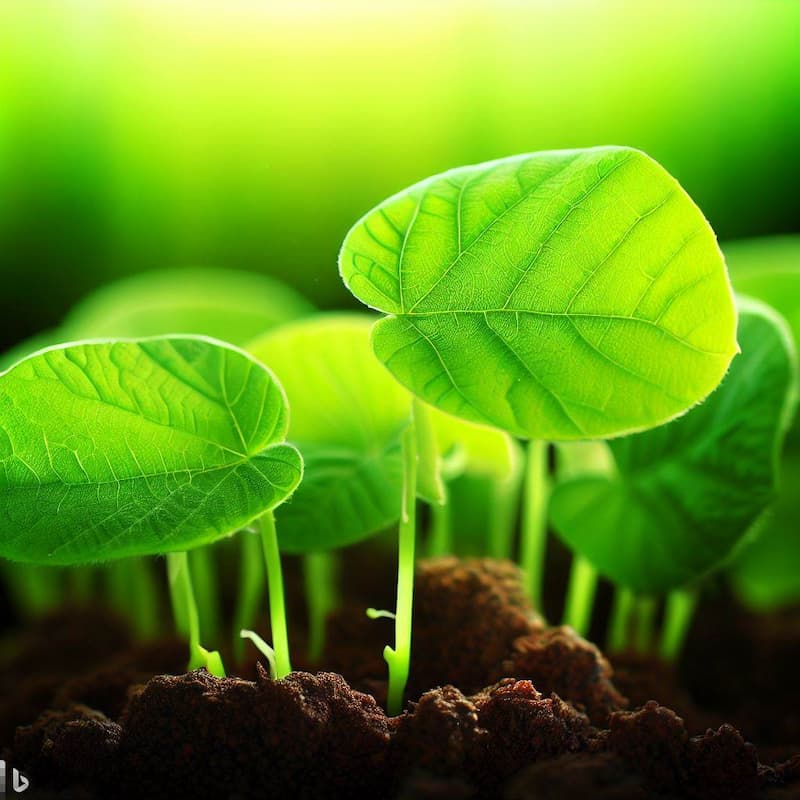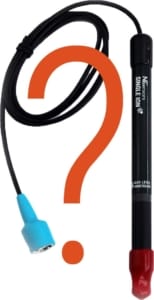Secrets of Soil Health: The Power of a Nutrient Ion Meter
Success in agriculture depends heavily on soil health. The nutrients present in the soil play a crucial role in crop growth and yield. If you’re a farmer or gardener looking to make the most of your harvests, you’ve come to the right place. In this article, we will explore how nutrient ion meter technology can revolutionize the way nutrient levels in the soil are measured, providing the essential information needed to optimize plant growth.
Visit our Nutrient ion analyzer
The Importance of Soil Health for Farming and Agriculture
Soil health is essential for success in agriculture. Healthy soils promote vigorous plant growth and the production of high-quality crops. However, to fully realize soil potential, it’s essential to understand nutrient levels. A well-balanced soil is the foundation of sustainable agriculture. In this article, we’ll explore how nutrient ion meters can help improve soil health.
Understanding Nutrient Ions and Their Role in Soil Health
To comprehend the importance of nutrient ion meters, we must first understand the nutrients found in the soil and their role in soil health. Ionic nutrients are essential elements for plant growth. These nutrients play a fundamental role in photosynthesis, fruit production, and overall plant health. With a solid understanding of ionic nutrients, we’ll be better prepared to grasp how ion nutrient meters can enhance crop performance.
The Limitations of Traditional Soil Testing Methods
Conventional soil testing practices often come with significant limitations. Results can be slow, costly, and sometimes inaccurate. With modern agriculture demanding efficiency and accuracy, it’s crucial to overcome these limitations. Ionic nutrient meters offer a faster, more accurate, and cost-effective solution for assessing soil nutrient levels. In this article, we’ll explore why traditional testing methods can fall short and how ion meters overcome these limitations.
Introducing the Nutrient Ion/ ISE Meter and Its Benefits
Now that we’ve discussed the limitations of traditional testing, it’s time to introduce the solution: the nutrient ISE meter. These advanced devices are revolutionizing how farmers and gardeners measure soil nutrient levels. In this article, you’ll dive into how a nutrient ion meter works and how it can benefit your agricultural efforts. You’ll discover why these devices are a valuable investment for optimizing crop growth and yield.
How to Use a Nutrient Ion Meter for Soil Testing
Nutrient ion meters may seem sophisticated, but they are relatively easy to use. In this article, we’ll provide you with a step-by-step guide on how to use a nutrient ion meter to analyze soil. You’ll learn how to take soil samples, prepare the meter, and obtain accurate results. With this knowledge, you’ll be equipped to make informed decisions about fertilizing your crops.
Interpreting Nutrient Ion Meter Readings for Better Soil Management
Obtaining readings from a nutrient ion meter is just the first step. The real value lies in understanding and applying these results to improve soil management. In this article, we’ll guide you through interpreting meter readings and how to use that information to optimize crop health. You’ll learn how to identify nutrient deficiencies and imbalances and take specific actions to correct them.
Case Studies
Success Stories of Using Nutrient Ion Meters for Soil Health Improvement
The best way to understand the impact of nutrient ion meters is through real-world examples. We’ll present case studies of farmers and gardeners who have experienced a significant increase in soil health and crop production after adopting this technology. Their success stories will illustrate how nutrient ISE meters can make a difference in agriculture.
Weaving Tales of Transformation
Our journey into the realm of nutrient ion meters would be incomplete without sharing real stories of transformation. Here, we unveil the experiences of dedicated farmers and gardeners who have harnessed the transformative power of these remarkable devices. These stories showcase not just their trials but also the triumphs, the moments of frustration turned into celebrations of bountiful harvests.
From Struggling Soil to Abundant Fields
Our first protagonist, John, faced the harsh reality of struggling soil. Despite his unwavering commitment, his crops never quite reached their full potential. But then, John discovered the silent hero in his soil health saga – the nutrient ion meter. With data as his guiding star, he meticulously adjusted nutrient levels, turning his barren fields into lush, green gardens. His journey was marked not only by healthier crops but also by the pride of a resilient farmer.
Empowering Gardeners to Flourish
Next, we explore the tale of a passionate gardener, Maria, whose flower beds and vegetable patches were far from their vibrant potential. She found solace and support in the form of a nutrient ion meter. With its aid, she delicately tuned the nutrient balance, transforming her garden into a paradise of color and flavor. Every blossom and every harvest became a testament to her newfound gardening prowess.
The Nutrient ISEMeter: A Trusted Ally
Through these narratives, the nutrient ISE meter emerges as more than just a device; it becomes a trusted ally in the journey of growers. It’s the compass that guides them through the intricate landscape of soil health, and the beacon that illuminates the path to sustainable and fruitful cultivation.
These stories demonstrate the tangible impact of nutrient ion meters. They are the anecdotes of hope for farmers and gardeners, the tales of transformation that inspire others to embark on a journey toward soil health and abundant harvests.
Let me know if this revision meets your expectations or if you have any further modifications in mind.
The Future of Soil Health Monitoring and the Role of Nutrient Ion Meters
The technology of nutrient ion meters continues to advance and evolve. In this article, we’ll take you to the future of soil health monitoring. We’ll explore upcoming innovations in this field and how nutrient ISE meters will continue to play a crucial role in sustainable agriculture. This is a glimpse into the exciting path ahead in soil health management.
Harnessing the Power of a Nutrient Ion Meter for Better Soil Health
In conclusion, nutrient ion meters are a powerful tool for understanding and improving soil health. With their ability to provide rapid and accurate measurements of soil nutrients, these devices are transforming agriculture and gardening. By leveraging the information they provide, farmers and gardeners can make data-driven decisions to optimize fertilization and crop growth. Say goodbye to wasted time and money on unnecessary fertilization. Unlock the secrets of soil health with a nutrient ion meter and watch your crops thrive like never before.

